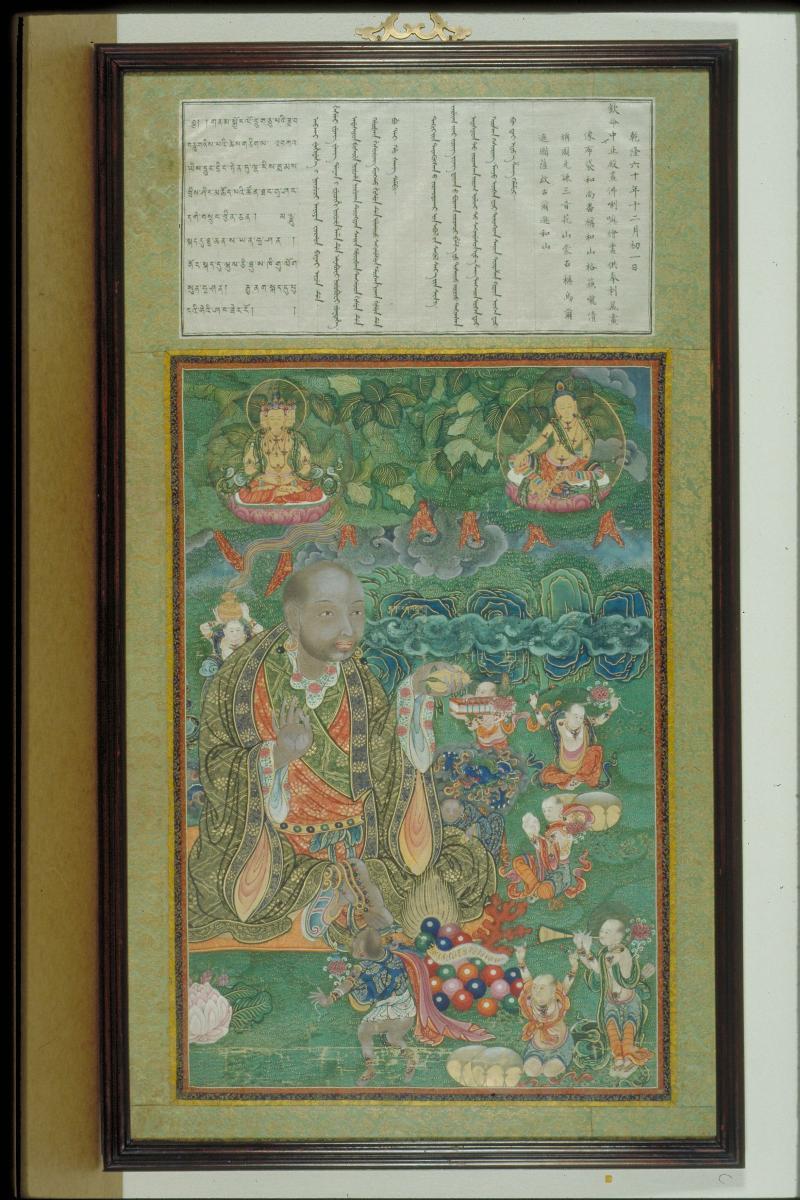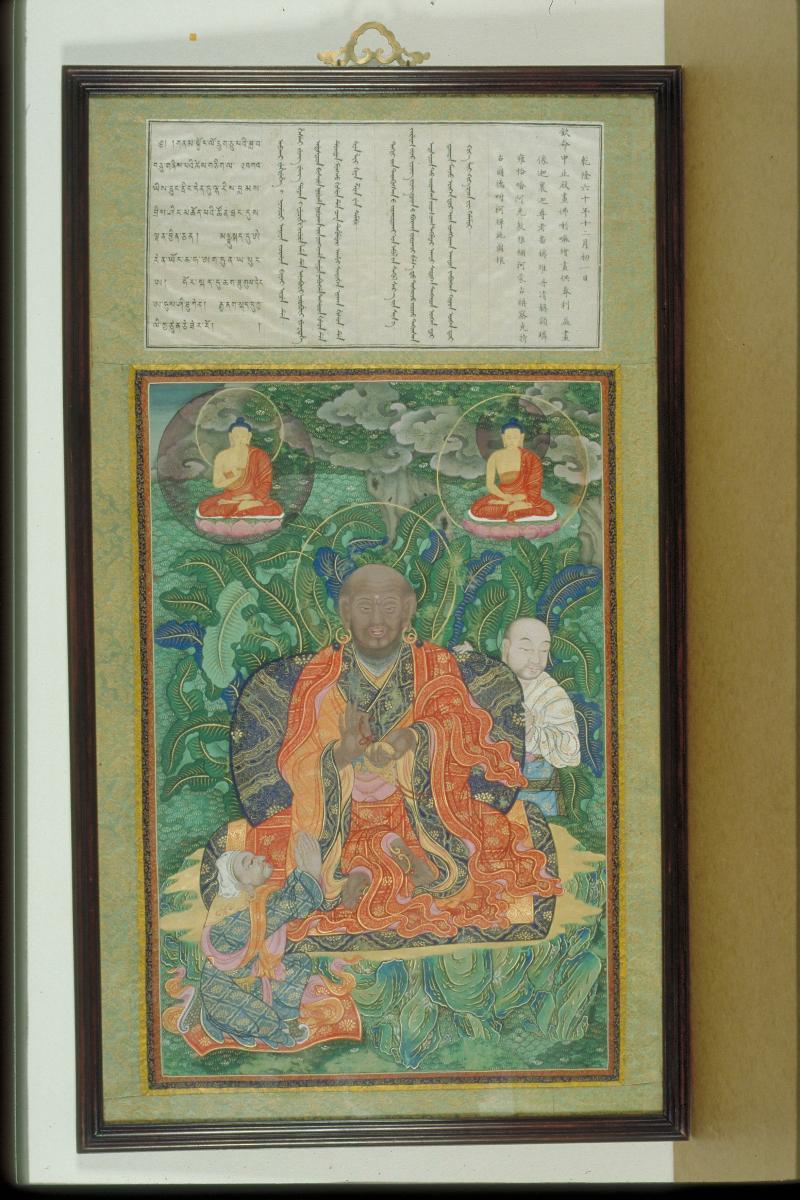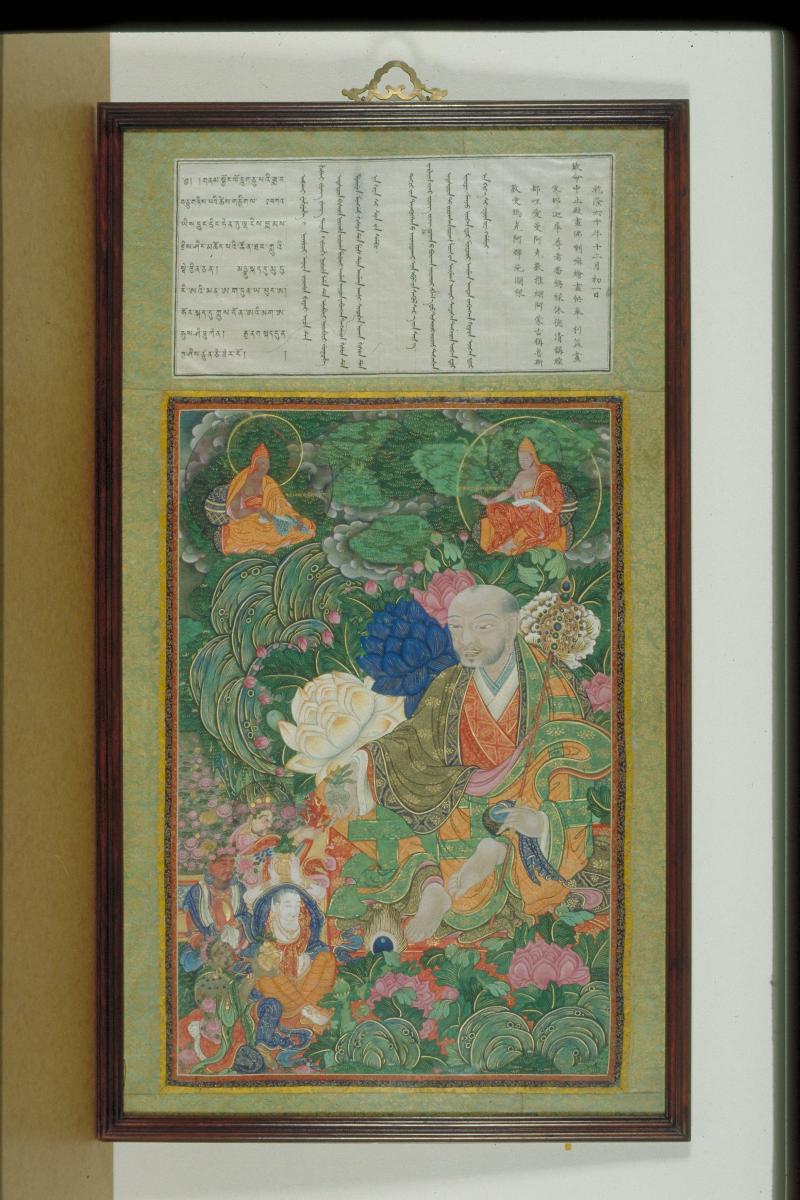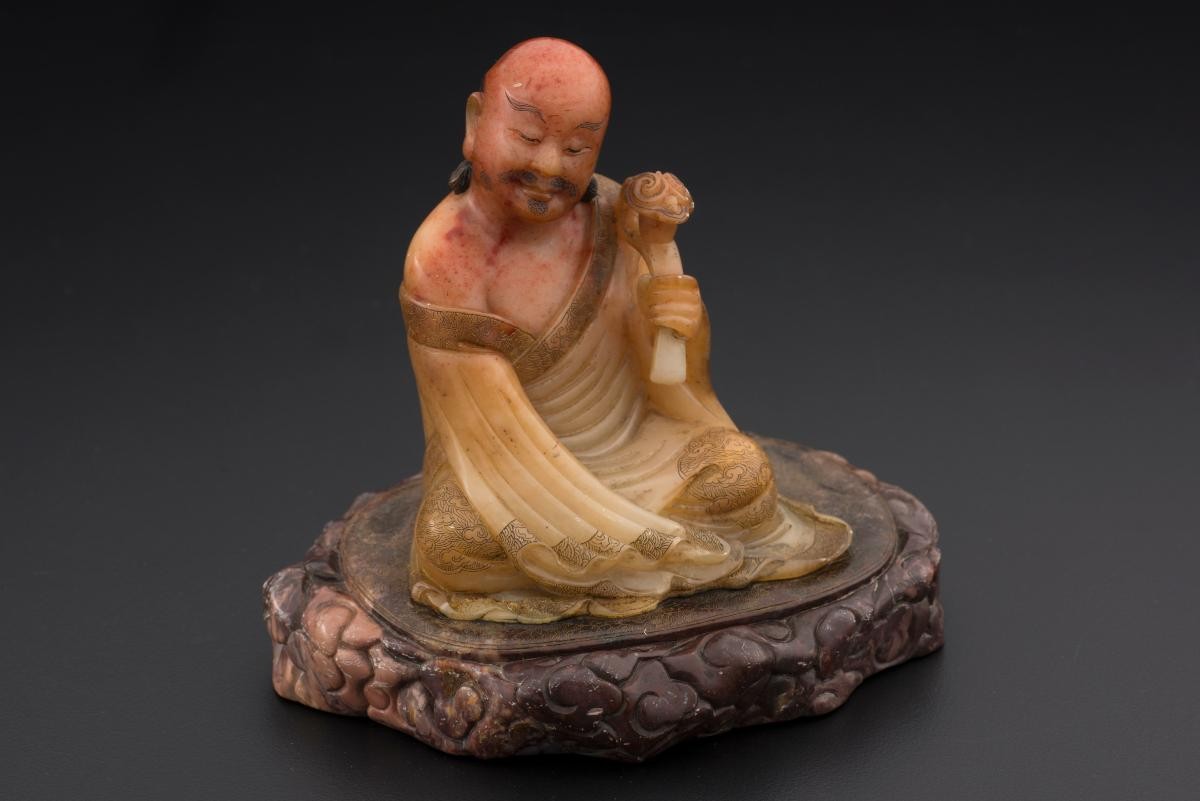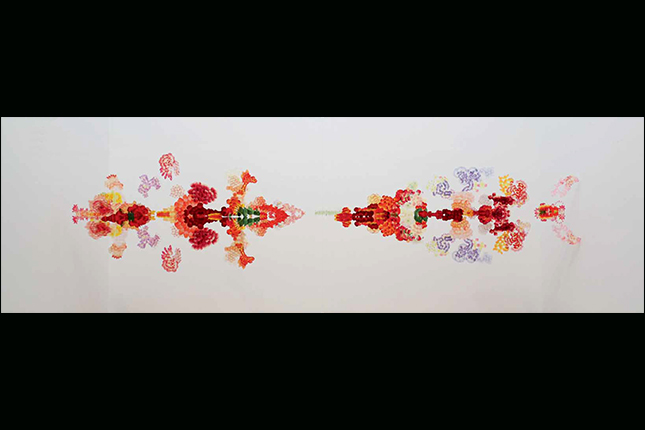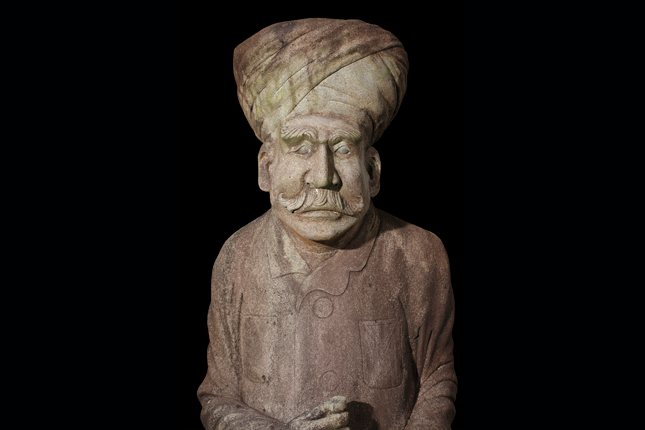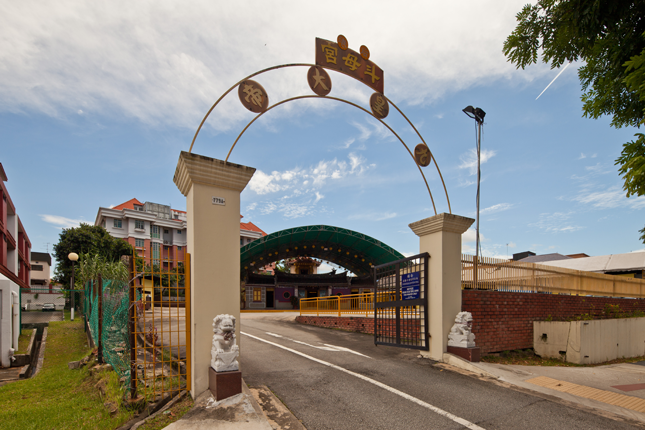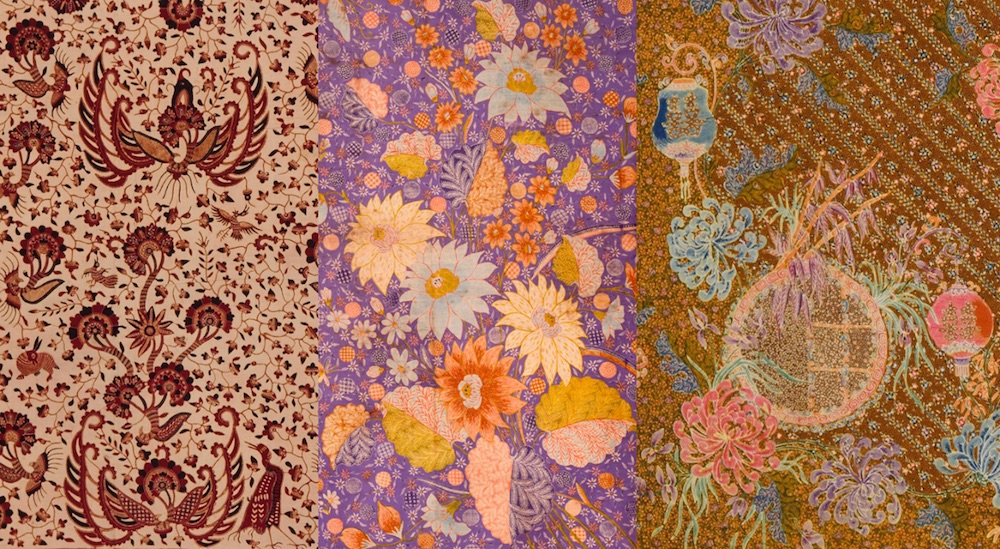This portrait depicts Budai 'luohan' or Hvashang as a dark-faced man who is venerated by gift-bearing children. Bodhisattvas, Avalokiteshvara and Manjusri, his guiding spiritual inspirations are located at the top corners of the painting. The portrait is part of a larger set of 18 paintings of luohan or enlightened beings also known as 'arhat' in Sanskrit, who have realised the Buddhist doctrine (or dharma). The portraits were commissioned by the Emperor Qianlong in 1795, the 60th year of his long reign. A devout Buddhist, Qianlong grew up studying Tibetan Buddhism. He was also one of the most significant imperial patrons of the arts.These fine paintings were made by a group of Chinese, Mongolian, Tibetan and European artists. They include inscriptions in the four official languages of the Manchu court – Chinese, Manchu, Mongolian and Tibetan.Bodhisattva refers to an enlightened being who, out of compassion, forgoes nirvana in order to save others.




